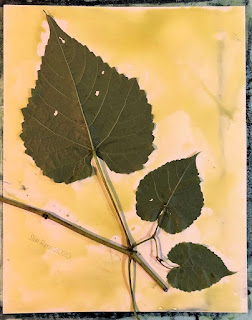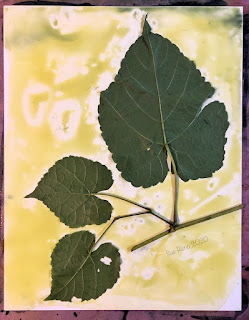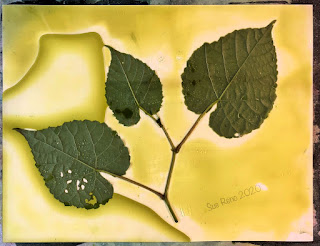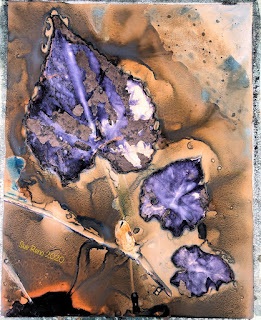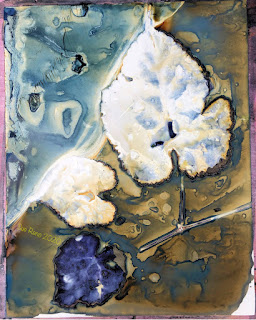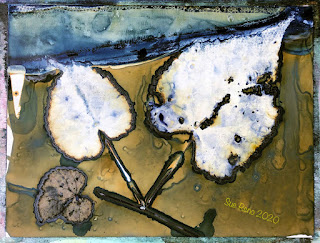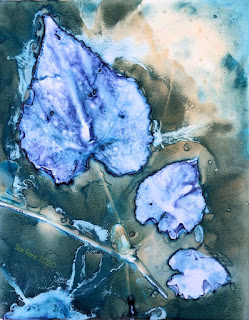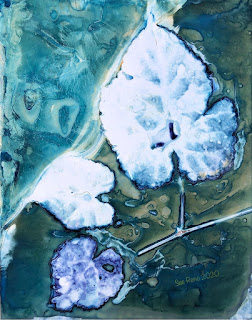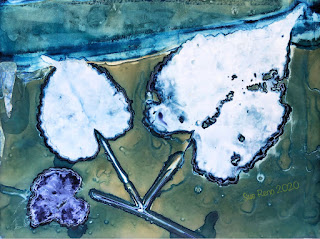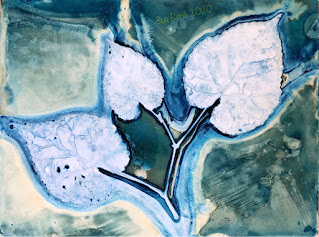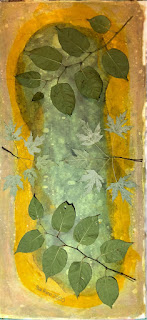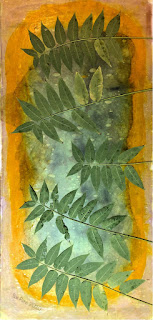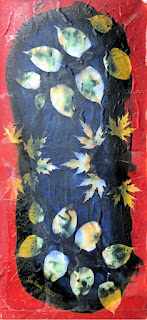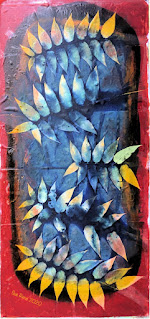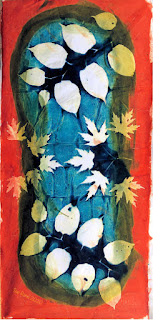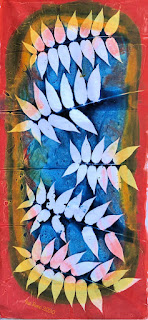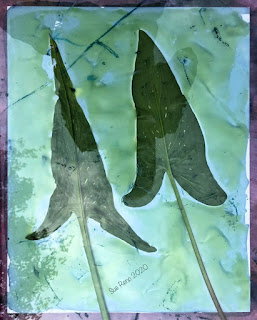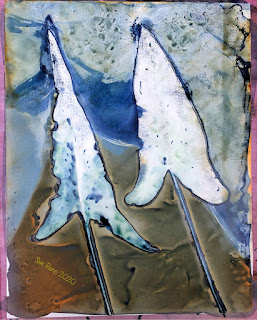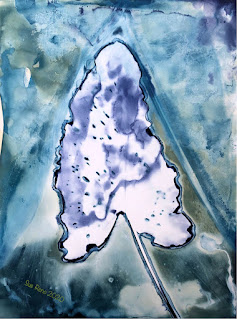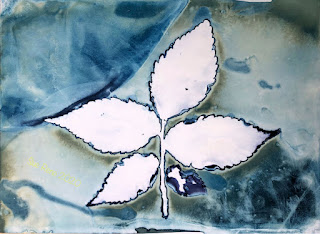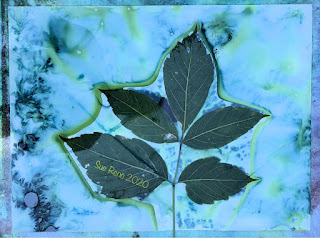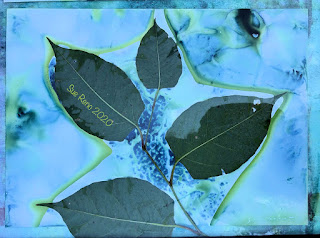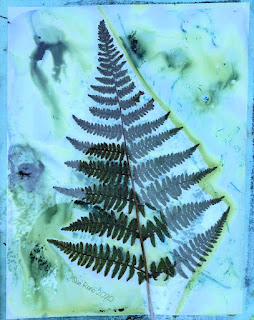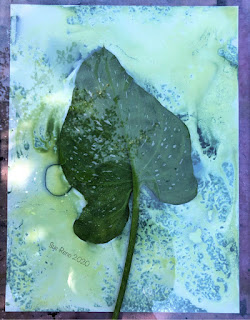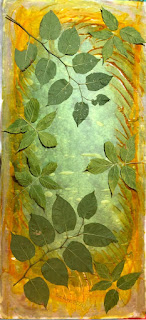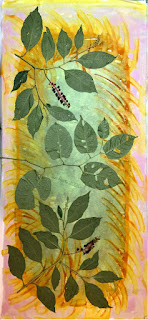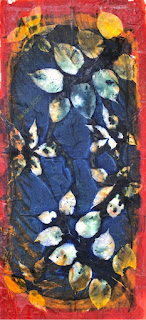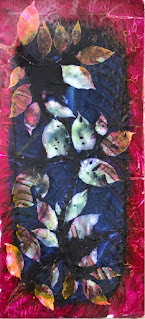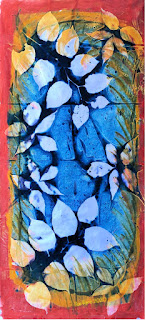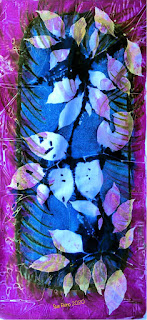This batch is 4 different arrangements of wild fox grape leaves, damaged by the usual ravages of weather and insects.
Once again, I marveled at how the cyanotype chemicals swirled around on the paper at the beginning of the exposure. The bulk of my wet cyan work has been done on fabric, which absorbs the chemicals and behaves very differently.
Here's the prints after exposure, but before rinsing.
I put these out on a hot afternoon, then got distracted. It was a full 24 hours before I had a chance to remove the leaves and bring the prints indoors.
I got a lot a really interesting colors and designs in that time period; however, that was counterbalanced by the way the leaves got dried and stuck onto the paper in places.
I had to spend some time soaking and very, very gently scrubbing to remove the leaf fragments.
So while I would not recommend this degree of over-exposure, the results are very unique and beautiful! Here are the finished prints.
There is so much variation in tone and intensity in these.
I think they capture that end-of-summer, brink-of-decay moment really well.
This one shows a lot of the leaf veining as well.
A reminder that you can also follow on your platform of choice:
Facebook page:http://www.facebook.com/suerenostudio
Twitter feed: http://twitter.com/suereno
Tumblr: http://suerenostudio.tumblr.com
Instagram: https://www.instagram.com/sue_reno_studio/
Twitter feed: http://twitter.com/suereno
Tumblr: http://suerenostudio.tumblr.com
Instagram: https://www.instagram.com/sue_reno_studio/
